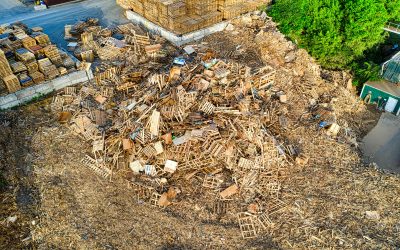Material recovery facilities (MRFs) play a crucial role in waste management by sorting and recovering recyclable materials from mixed waste streams. Optimizing resource recovery in MRFs is essential for reducing waste sent to landfills and conserving valuable resources.
This article explores the importance of optimal processes, where to find the best waste screening tools, and how to implement material recovery to achieve more sustainable, profitable strategies.
Why Resource Recovery is Important
This process involves extracting reusable materials from waste streams to be utilized during new production. It aims to support environmental and public health initiatives by reducing the depletion of natural resources and saving energy.
Material recovery is vital to the existence of the circular economy — a production and consumption cycle that maximizes the life cycles of extracted materials, thereby minimizing waste.
Circular economy initiatives impact waste management cycles by prioritizing resource recycling, shifting the sole focus away from disposal. To achieve this type of material recycling, MRFs need an effective waste screening process with machinery, like:
- Trommel screens: Cylindrical steel frame drums that separate garbage, wood chips, gravel, green waste, and demolition debris
- Revolving screens: Tumbling, star-shaped discs attached to rotating prongs that sort materials based on size and shape (ideally used for finer materials like plastic, metal, and paper)
- Vibrating screens: Decks that vibrate or oscillate, allowing materials to separate based on shape, size, or density
There is a growing number of waste screening options available as the movement toward reusable and recyclable production increases. Learn more about MSW screening equipment.
Overcoming Waste Screening Challenges
Without proper technology or processes for resource recovery, MRFs face several common challenges in waste screening. These include difficulties with:
- Identifying recyclable materials in waste
- Separating reusable materials
- Ensuring the purity of extracted materials
- Safety for MRF workers
Advanced tools and technologies are available to help your MRF or waste facility overcome these limitations and achieve progress toward a more circular economy. Now more than ever, waste processing machines can be tailored to your facility’s operations, environmental goals, and screening needs.
Equipment for Optimizing Resource Recycling
A leading manufacturer of waste material screening equipment — Aggregates Equipment, Inc. (AEI) — highlights screening solutions for maximizing material recovery.
The BIVITEC® Screen
The BIVITEC® overcomes common screening challenges with its low-maintenance, long ware-life capabilities. Using free-vibrating technology that sifts materials through flexible, polyurethane screen mats, it ensures precise separation of waste according to size, shape, or density.
The BIVITEC® screen separates fine materials (such as plastic and metal) from sticky or moist material and can be used in nearly all areas of recycling. This includes slab waste, recycled plastics, wet compost, and more. Additionally, it’s available for portable, on-site use for facilities that require mobile screening.
The Freedom Disc Screen
For difficult waste materials (such as urban and industrial recycling), screening equipment must remain highly efficient and clog-free. AEI’s Freedom Disc Screen uses rotating, star-shaped disks that tumble materials to sort by size and shape, effectively separating valuable resources, like metals, paper, and plastics.
The Freedom Disc Screen is ideal for sorting through high volumes of waste while overcoming common screening problems (such as clogging and wrapping) and maximizing resource recovery.
To learn which waste screening technology is right for your facility and how to implement it properly, call 717-656-2131.


